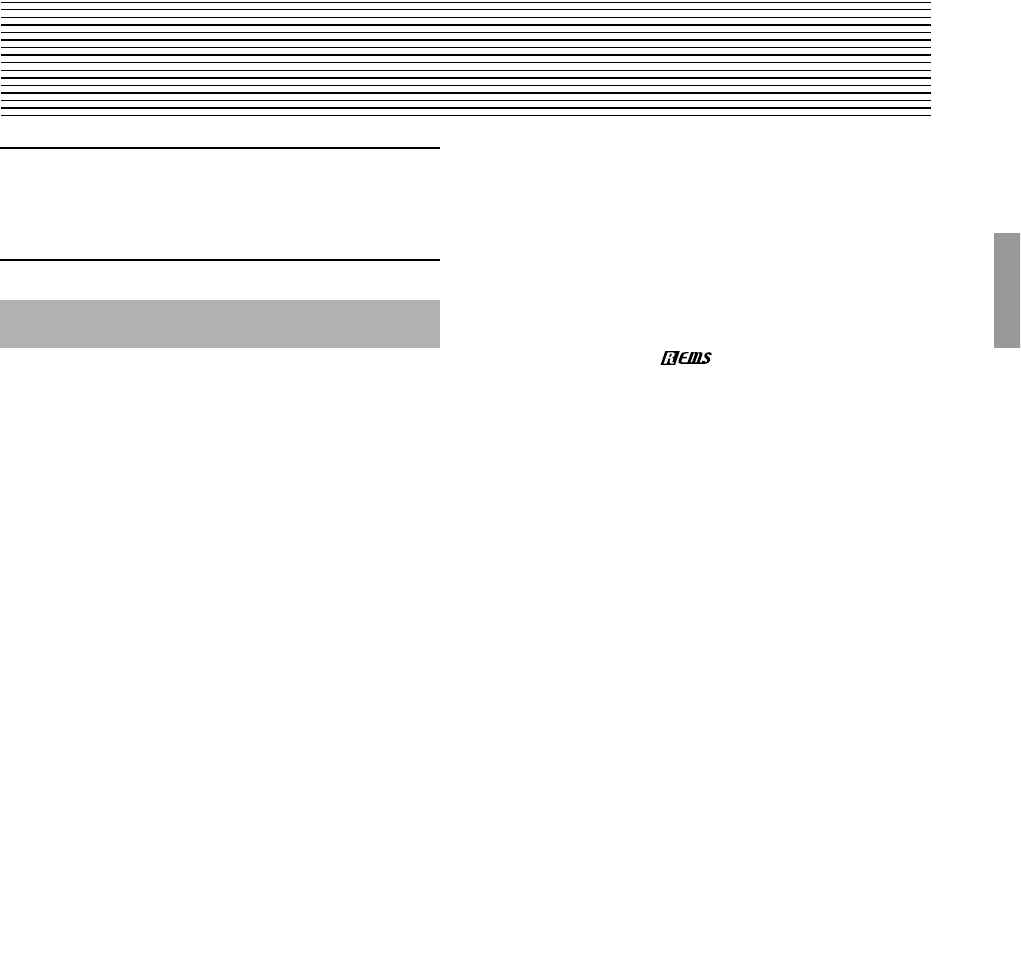
Introduction
1
Introduction
• The D16 is a 16 track digital multi-track recorder
(MTR) with full-digital processing (
24 bit
internal
processing,
16/24 bit
uncompressed
recording and
playback,
44.1 kHz
sampling frequency).
• It contains a
16 track
recorder, a
24-channel 8-bus
mixer, and effects.
When using
16 bit
recording/playback:
8
tracks can
be recorded simultaneously, and
16
tracks can be
played back simultaneously.
When using
24 bit
recording/playback:
4
tracks can
be recorded simultaneously, and
8
tracks can be
played back simultaneously.
From recording to effect processing to mixing down
to CD-R/RW (a CD-R/RW drive is required), DAT
recorder or MIXDOWN,
all processing is per-
formed completely in the digital domain
.
•A
2.1 GB
hard disk is built-in, allowing a total of up
to
6.5 hours
of recording (when recording one track
at 16 bits). A maximum of
100
songs
×
16
tracks × 8
virtual tracks can be recorded, for a total maximum
of 12,800 tracks of data.
• All analog inputs in the mixer section use high-per-
formance balanced preamps to take full advantage
of the audio quality of full-digital processing.
Dedicated XLR input and guitar input jacks are pro-
vided, and support a range from mic level to +16
dBu (beyond pro audio level) so that virtually any
audio source can be connected.
All phone jack inputs use TRS balanced jacks to
support balanced input. Of course, unbalanced
input is also supported.
The D16 has a built-in mic that lets you immedi-
ately record phrases that come to mind.
The S/P DIF digital input provides a sampling rate
converter that automatically converts 48 kHz or 32
kHz sources to 44.1 kHz.
• Each analog input/mixer channel provides high
EQ, mid EQ, and low EQ. The mid EQ has an
adjustable cutoff frequency.
Since separate EQ is provided for the inputs and the
mixer, you will never have the problem of uninten-
tional “double EQ” that can occur on MTR systems
with an analog mixer, when the EQ settings used
during recording are re-applied during playback.
A maximum of eight insert effects can be used on the
analog inputs/mixer channels. Two master effects
accept sends from each channel. And lastly, a dedicated
final effect can be applied to the master outputs. Insert
effects and master effects can be selected from 128/32/32
(total of 192) different preset programs, each of which
combine up to five of 98 varieties of high-quality effect
with settings created by professional musicians and stu-
dio engineers. You can freely edit the preset programs
and store them in one of 192 user areas. An expression
pedal (separately sold option) can be connected to con-
trol an insert effect in realtime.
• The effects built into the D16 make it easy for you to
use detailed and powerful modeling sounds pro-
duced by Korg’s “ ” modeling technology.
•A tuner is built in, so that you can tune an instru-
ment etc. whose sound is picked up by the internal
mic, or check the tuning of a playback track.
• Fader, EQ, pan, and effect settings etc. of the mixer
section can be stored as scenes, and up to 100 scenes
can be recorded in each song. Scenes can be
switched as time elapses during playback, or you
can recall them when desired as general-purpose
settings.
• Operations such as record, copy, and delete are per-
formed using non-destructive editing. You can use
the Undo function to return to the state before
recording or editing, and then use the Redo function
to cancel the Undo operation. Undo allows you to
return through the previous 99 recording or editing
operations.
• The Auto Save function ensures that songs or
phrases that you created by recording or editing are
automatically saved to disk when you switch songs
or turn off the power, freeing you from having to
manually save your data.
• Each track provides eight virtual tracks.
When recording solo parts etc., you can switch
between virtual tracks to record multiple takes, and
select the best one later. Or when bouncing (ping-
pong recording), you can specify an “unselected vir-
tual track” as the recording destination, so that six-
teen tracks of recorded data can be mixed down to
two tracks without erasing any of the sixteen tracks.
By repeatedly bouncing sixteen tracks to two tracks,
you can theoretically create a song with 16 × 8 = 128
tracks without erasing any of the original track data.
• In addition to the metronome sound, the D16 pro-
vides 215 different rhythm patterns in a wide range
of musical styles, which can provide a recording
guide with a more realistic sense of tempo. Even
without connecting a rhythm machine, it’s easy to
begin recording along with a favorite rhythm. These
rhythm patterns can also be recorded on a track.
• Auto and manual punch-in/out recording functions
make it easy for you to re-record a specific portion of
your performance that you would like to redo.
• The Trigger Record function can automatically ini-
tiate recording when audio input occurs, so that it’s
easy to begin recording even if both hands are occu-
pied with playing a guitar or keyboard. A foot
switch can also be used to start/stop recording.
Thank you for purchasing the Korg D16 Digital
Recording Studio. To ensure trouble-free enjoy-
ment, please read this manual carefully and use
the instrument as directed.
Features


















